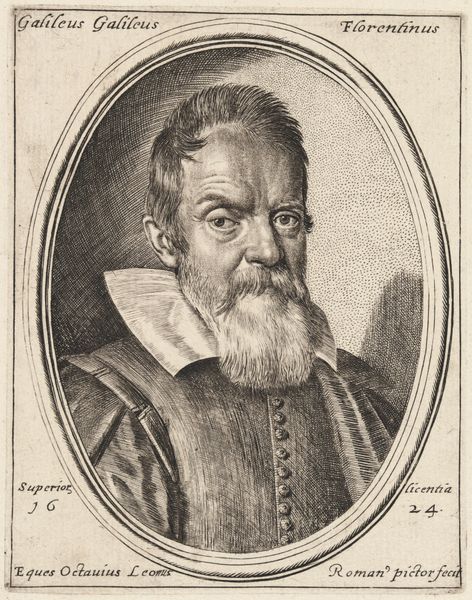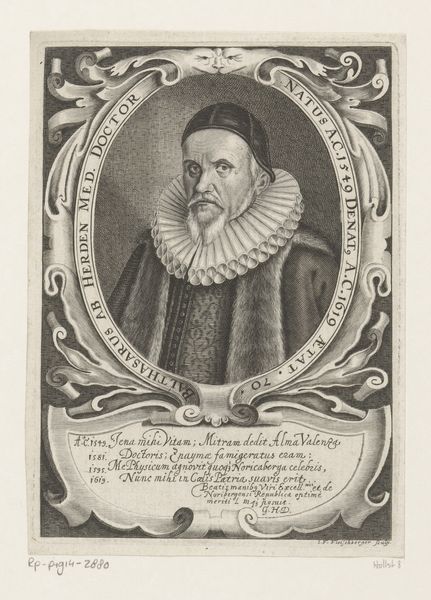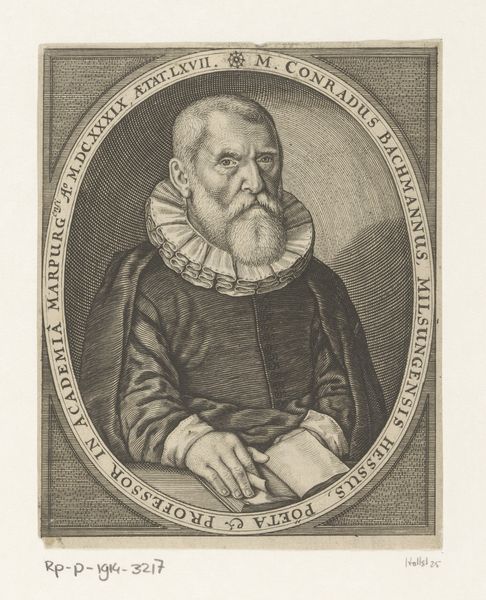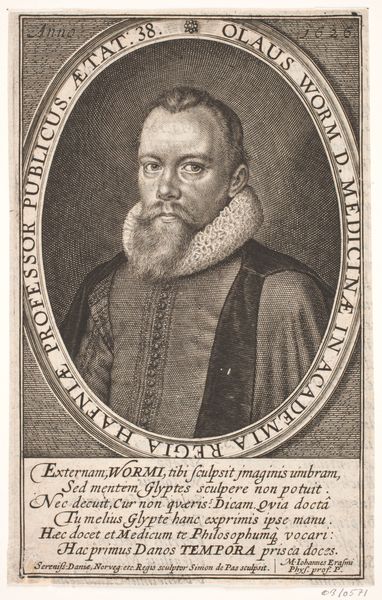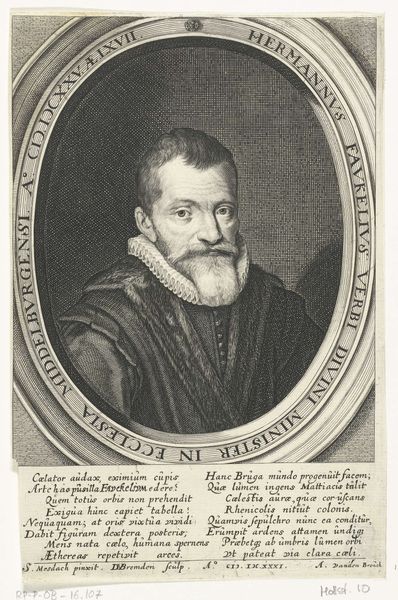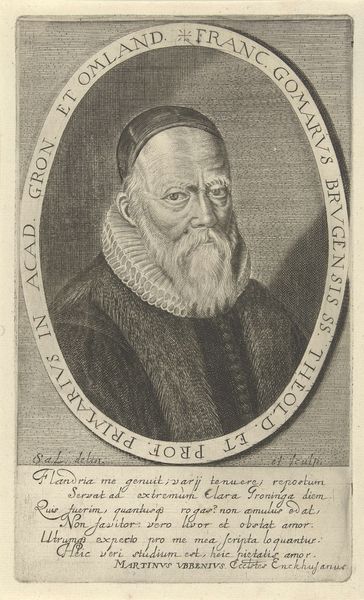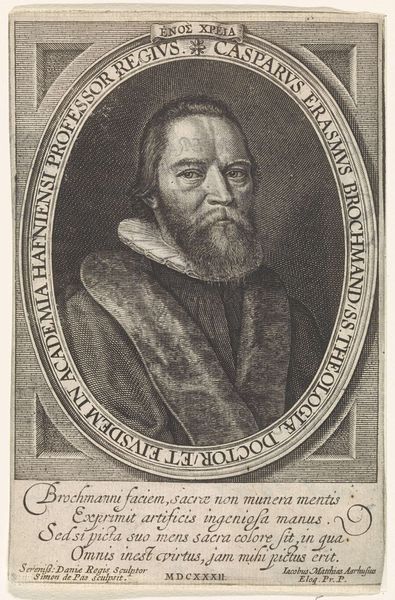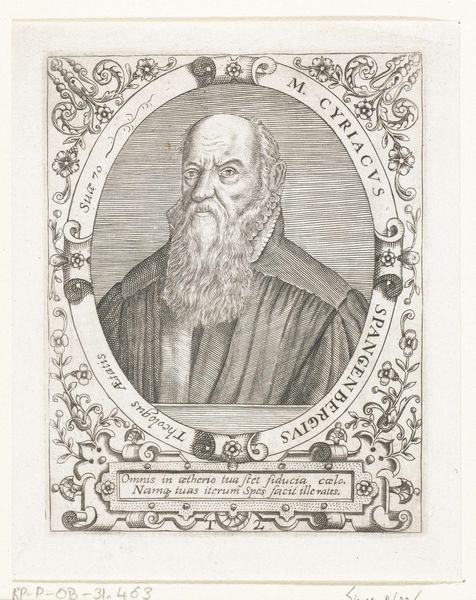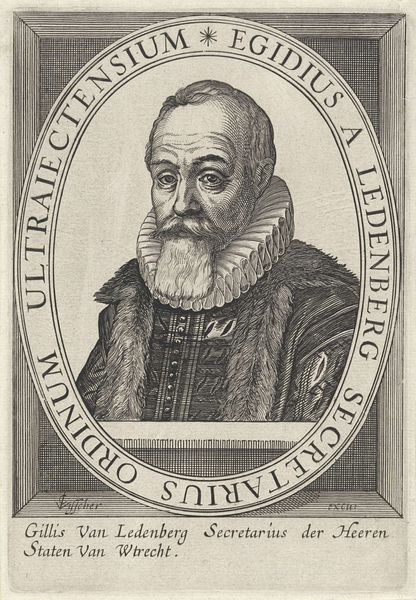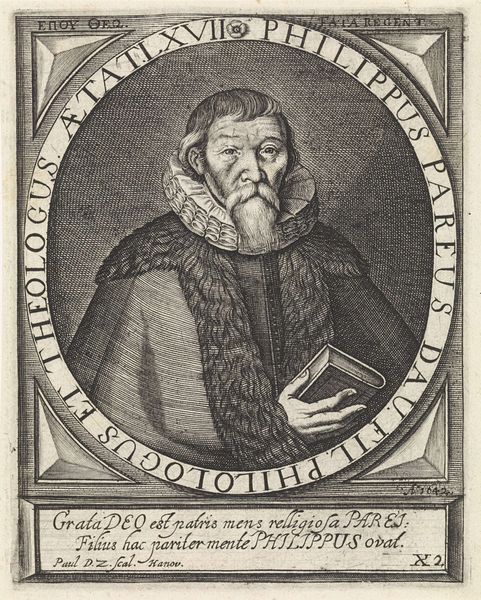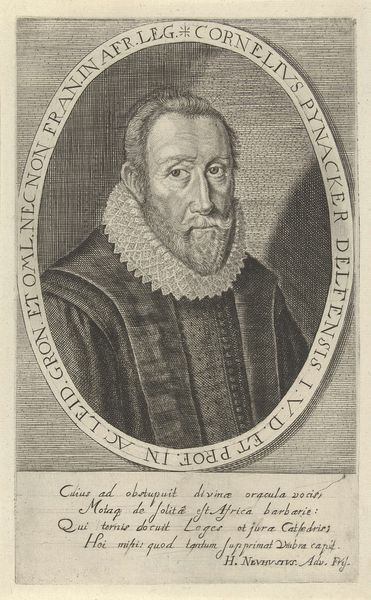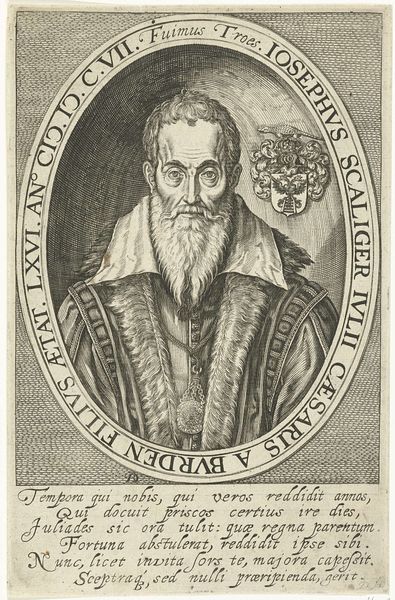
print, engraving
#
portrait
#
baroque
# print
#
portrait drawing
#
engraving
Dimensions: height 135 mm, width 103 mm
Copyright: Rijks Museum: Open Domain
Curator: This print is a portrait of Rudolf Göckel, dating from around 1632 to 1641, made by Paul de Zetter. It's an engraving, so all those fine lines are etched into a metal plate. The subject's piercing gaze really gives it character, even though the palette is restricted to monochrome. What strikes you most about it? Editor: Well, it's interesting that despite the limitations of the medium, it conveys so much detail, particularly in the textures - the ruff, the beard... it almost feels photorealistic. How do you interpret the image compositionally? Curator: The formal elements establish a clear hierarchy. Note the circular frame containing Göckel. This immediately directs our vision and contains the image's essence. Consider how the inscription circles him, literally framing his identity. The text banner at the bottom acts as a grounding element, anchoring the portrait and providing contextual weight to his persona. What effect do you believe this layered framing achieves? Editor: It emphasizes Göckel's importance, almost as if he's being presented as a figure of great philosophical value. The text seems to elevate him alongside figures like Aristotle and Plato. The consistent cross-hatching seems so precise, each line contributing to the form and the tonal variation. How does that method shape our engagement with the work? Curator: The meticulous engraving fosters a sense of seriousness and scholarly rigor. It is through the careful application of line and tone that the portrait gains depth and form, communicating not only Göckel's likeness but also projecting his intellectual status. Do you perceive the visual effect being connected with his social standing? Editor: Yes, it lends him a kind of gravity and permanence, reinforcing his identity through the enduring nature of the engraving itself. I never thought about the labor intensity also emphasizing importance. Curator: Exactly. And recognizing those conscious aesthetic choices illuminates the essence of Baroque portraiture. Editor: I hadn't considered the amount of control an artist has when they rely solely on line and shading for texture and light, it makes it that much more amazing. Curator: Absolutely, observing the image's construction from this angle unlocks layers of significance that enhance one's encounter with Baroque portraits.
Comments
No comments
Be the first to comment and join the conversation on the ultimate creative platform.

